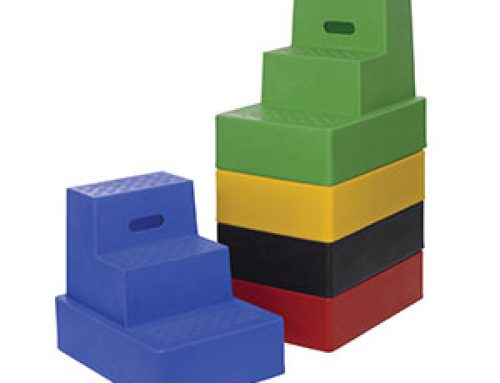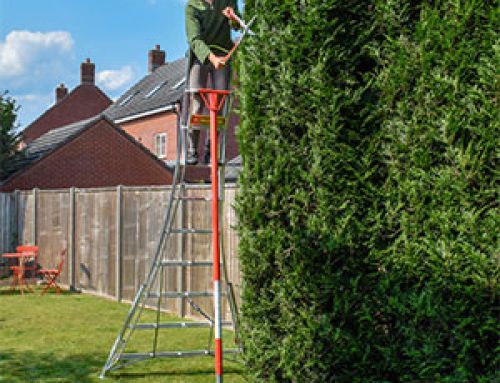Ladders sometimes get a bad press, but when we look at the specifics of these news stories, it is almost always down to poor equipment choice or improper usage as a result of inadequate training that causes the accidents we hear about. One Kent based roofing company was in the news recently after they were taken to court following an accident in which an employee suffered serious back injuries after falling from a ladder. The man had been carrying a bucket of broken tiles down from the roof when he fell, and he could not maintain the standard three points of contact with the ladder, due to holding the bucket and this therefore, was deemed to be the cause of the accident.
When using a ladder, three points of contact should be kept with the ladder at all times. This means that at any one time only one hand or foot can be off the ladder, so when you are going up or down both hands should be on the stiles, and when stationary only one hand may be used to undertake any work. If you are carrying anything up or down with you then you are immediately breaking this rule, as you won't have three points of contact with the ladder while you are scaling it. Instead, other methods should be used to transfer items up or down, such as a rope and pulley system. These are not sophisticated set ups and can be set up easily and used by all on site. The courts took this view when dealing with AU Roofing and Building Services Ltd. and fined them £28,000, plus costs.
In this case ladders were a suitable access method for the job, but the lack of suitable equipment to bring materials up and down was the root cause of the accident. It is incidents like these which make local authorities fearful of ladder use by their own staff, as they are open to prosecution and bad press. Stoke-on-Trent City Council banned ladders in 2010, for many jobs around the town as it was deemed unsafe to use them in certain areas. Now Ringwood Town Council has followed suit and decided to scrap the use of ladders to put up banners for charity and community events between lampposts in the town.
Health and Safety officers advised council staff that the use of ladders for this job was not safe, as the locations they are used in are often on an incline or otherwise unsuitable for safe ladder use. They recommended the use of scaffolding towers or cherry pickers to minimise the risk to staff and citizens posed by the use of ladders in these areas. They have not banned ladders altogether, as there are certain jobs around the town which are perfectly safe to carry out using ladders, but for the hanging of banners, ladders are now no longer allowed.
The council is looking at the alternatives and associated costs, as the banner space brings in income for the council, as well as publicising charity and community events which enrich the town. It is not an easy decision to have to make, especially as charities rely on this cost-effective advertising to serve their community.
Perhaps ladders more suited to uneven ground would be a worthwhile option as these would allow for the banners to go up quickly and with minimal staff and costs, while cherry pickers and scaffold towers involve closing off parts of the pavement or even the road for periods of time while the work is carried out. Better quality, specialised ladders would address the safety concerns while mitigating against the extra costs involved with using alternative height access methods.






Leave A Comment
You must be logged in to post a comment.